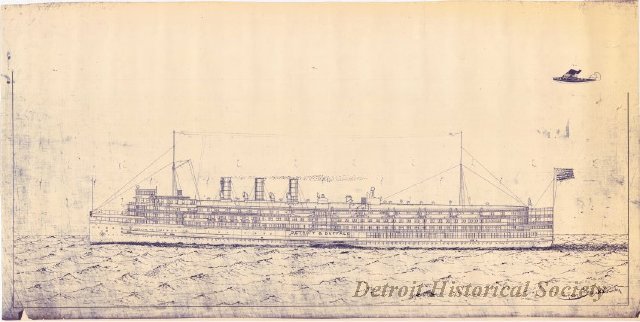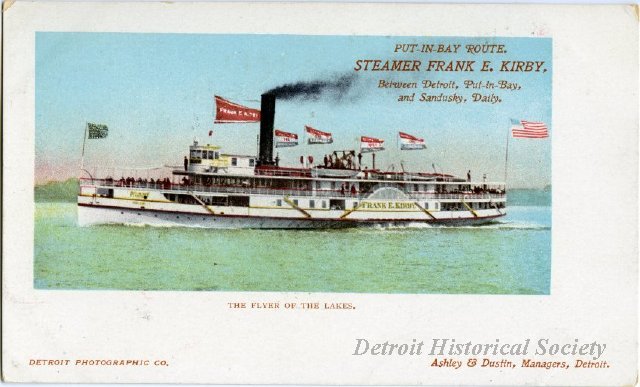Peerless among Michigan naval architects, Frank E. Kirby is best known for his designs of the paddle steamer Tashmoo and the two Bob-Lo boats, Columbia and Ste. Clair, which plied the Detroit River for most of the 20th century.
Born in Cleveland, Ohio on July 1, 1849, to Martha and shipbuilder Stephen Kirby, Frank Kirby lived much of his pre-adult years in Saginaw, Michigan. As a young man he acquired a job at Allaire Works, a leading 19th-century marine engineering company in New York City which produced steam engines for more than half of the nation’s early steamships.
In 1870, after meeting with Captain Eber Brock Ward during a trip home from New York, Kirby, along with his elder brother Fritz, relocated to Detroit to supervise Ward’s iron shipyards in Wyandotte, Michigan. Together the Kirbys built an iron-hulled tugboat that exceeded multiple specifications. These merits paved the way for Kirby’s career as a renowned ship designer and builder.
In 1877 the Detroit Dry Dock Company absorbed the Wyandotte Iron Works and in 1882 Frank Kirby assumed the position of chief engineer and naval architect. Kirby went on to help design and build nearly 100 vessels including passenger boats that plied the waters between Mackinac Island, Detroit, Toledo, Cleveland and Buffalo. The City of Detroit III, one of Kirby’s passenger ships, has its Gothic Room on display at the Dossin Great Lakes Museum. He also designed a wide variety of commercial ships that included freighters and railroad ferry steamers, which weredesigned to plow through ice and help connect the railroads between Michigan’s two peninsulas.
The Tashmoo was one of Kirby’s most famous designs. Built for the White Star Steamship Co. of Detroit by the Detroit Shipbuilding Company, she was launched on New Year's Eve 1899. The Tashmoo regularly carried passengers on Lakes St. Clair and Huron until 1936. Nicknamed the “White Flyer,” at the time she was one of the fastest ships on the Great Lakes.
In addition to designing and building ships, Kirby was also skilled at inspection and repair. He wrote the Steamboat Inspection Code and acted as a consultant for other ship builders and owners. At the beginning of the Spanish-American War, Kirby was sought by the government as an expert on transport vessels and was utilized by the United States Army to improve troop transportation.
Kirby was married to his wife, Mary Thorpe, in 1876, and the two had one son. Kirby died in New York City in 1929.

